About 15,000 armoured vehicles 1947-90.
Tanks
Engineering Vehicles
- FV219 & FV222 – Conqueror ARV Mk.1 & 2
- FV3902 Churchill Flail ‘Toad’
- FV3903 Churchill AVRE
- FV4003 Centurion AVRE
- FV4018 Centurion BARV
- FV4203 Chieftain AVRE
Other Vehicles
Unarmored Vehicles
Main Battle Tank Prototypes & Projects
- FV4201 Chieftain/90mm Gun Tank T95 Hybrid
- Straussler Main Battle Tank
- Vickers Mk.4 Valiant
- Vickers Mk.7
- Vickers Mk.7/2
Self-Propelled Gun Prototypes & Projects
- Chieftain Casement Test Rig (CTR) SPG
- FV3805
- FV4004 – Tank, Heavy Gun, 120 mm Gun, Conway
- FV4005 – Heavy Anti-Tank, SP, No. 1 “Centaur”
ATGM Carrier Prototypes & Projects
RO2000 Family
Other Prototypes & Projects
- A.34 Comet Crocodile
- A.46 Light Tank
- Centurion Mantletless Turret
- FV200 Turbine Test Vehicle
- Laird Centaur
- Tank, Heavy No. 2, 183 mm Gun, FV215
School of Tank Technology (STT) Projects
- STT Project ‘Cerebos’
- STT Project ‘Chimera’ (1950)
- STT Project ‘Chimera’ (1984)
- STT Project ‘Excalibur’
- STT Project ‘Spartan’
Fake Tanks
Tactics
UK Vehicles in Foreign Service
Starting Anew
While UK’s economy was seriously in jeopardy after the war, tank development reached a peak in 1944-45 with the Comet and the Centurion, both cumulating all the hard-learnt lessons from encounters with German tanks. The Comet, the last of a long line of cruisers was fast, better protected and better armed, with a long 17-pdr, than most allied tanks. The Centurion, largely based on the latter received an extra pair of road wheels and longer chassis for increased protection. At that time previous heavy tanks projects failed and it was thought that a heavier cruiser could provide the armoured divisions with the “universal tank” concept which emerged from the war. This tank, only tested in Belgium during the last days of ww2 in Europe, would become immensely famous during the cold war not only for its long, successful and battle-proven career as to be regarded by most experts today as the first main battle tank.
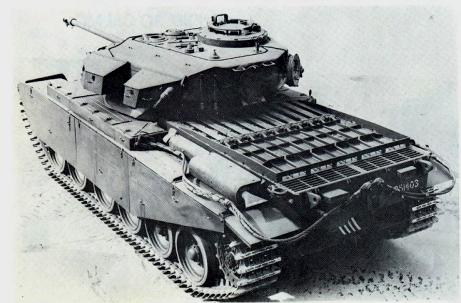
The Centurion main battle tank was the most recognizable postwar tank of Great Britain, encompassing the best lessons learned from WW2 into a “universal tank” package, mid-way between the old cruisers and the heavy tanks. The fame of this model made it a landmark in tanks history.
Austrian Charioteer. This little known transitional tank was a compromise, destined to rearm reserve units stationed in Great Britain with a more potent tank in the 1950s. This was done by fitting a new turret armed with the 20 pdr to the existing Cromwell chassis.
Britain’s Last Heavy Tank
The real threat posed by postwar heavy soviet tanks like the IS-3 and others asked for an even better protected/better armed tank than the Centurion and led to design the Conqueror. Indeed, while the Centurion was rearmed with the 20-pdr (83 mm), the 120 mm of the IS-3 was still superior, supposedly in range, and at least on impact. It was not known at that time the poor rate of fire and accuracy of the gun compared to Western standards. The master ace of the Conqueror was its massive 120 mm L1 rifled gun and a formidable frontal armour of 180 mm or 7 inches of solid RHA. But this was paid by pachydermic dimensions and 65 tons that took their toll on the Rolls-Royce Meteor M120 810 hp (604 kW), resulting in a speed of only 34 kph at best on flat, and serious reliability issues. The mobility however equalled the famous ww2 Churchill on all terrains. The range of fire or ammunition carried were not impressive either due to the use of separate charge and projectile, a common practice for those caliber rounds. A transitional serie armed with the 20-pdr was called FV 221 Caernarvon. In all, 165 were built. There was even a planned tank with an 183 mm gun. But the arrival of the 105 mm armed Centurion led to rapidly retire the Conquerors posted in Germany and the heavy tank concept was definitively buried.

The Conqueror heavy tank was the last of its kind in British service. Built on purpose to defeat heavy soviet armour like the IS series, this model was only built to a few numbers. Because of its weight and being underpowered, mobility was poor and never compensated for its heavy armour and big rifled gun. Advanced ammunitions of less calibers like on the Centurion armed with the 105 mm L7 rendered the concept obsolete over time.
NATO’s Gun: The Royal Ordnance L7
Probably the most famous piece of ordinance on the Western Hemisphere, and in Asia (with both Chinas and South Korea), the Royal ordnance L7 was a new generation main tank gun designed to replace the 20-pounder (83 mm) with a truly modern rifled gun concept, providing more muzzle velocity than ever while retaining a moderate recoil due to several innovations. It was researched already in the early 1950s by the Armament Research and Development Establishment at Fort Halstead, and the design was refined after obtaining a T-54 which ended on the British Embassy gardens at Budapest during the Hungarian Revolution of 1956. The T-54 main gun was indeed of an almost similar caliber, and had superior performances compared to the 20-pdr. This new gun received a Horizontally-sliding breechblock for loading the fixed cartridge cases. Recoil was approximately 29 cm, and the return motion automatically opened the breech and ejected the empty cartridge case. Moreover the 52 cal. lengths barrel was the first fitted with a bore evacuator (in the west, the T-54A and T-55 both have one muzzle mounted) approximately halfway down its length and eccentrically mounted. The rate of fire was 10 rounds per minute on average, for a practical range in direct fire of 2500 meters and an indirect fire (as proven by Israeli gunners on the Golan heights) of nearly 4,000 meters. It could defeat 120 mm of sloped armour with HEAT ammunitions, but many more were used afterwards. The L7 helped the Centurion to be upgraded and maintained in service well until the late 1980s, but it also equipped the German Leopard I (licence-built by Rheinmetall), well distributed among other European countries, by the US M48, M60 Patton and M1 Abrams, by the Swiss Panzer 58/61/68 series, and most Chinese tanks from the 1970s.
British Forces in NATO
Great Britain joined NATO early on the creation of the treaty and is still seen as one of the original founding members. Lord Ismay was instrumental in the establishment of the Treaty of Brussels in 1948 which was later extended to other countries, including the USA in 1949. British bases in West Germany were active for years, including four armoured divisions until 1990, but was much reduced afterwards. The BFG was known in the origin as the British Army of the Rhine (BAOR), placed on the British zone of occupation. The original forces comprised the Ist (BR) Corps and four divisions, the 1st, 2nd, 3rd and 4th Armoured Divisions. This presence was located in the North Rhine-Westphalia and Lower Saxony. The divisional HQ is located at Herford, near Bielefeld. Garrisons were posted at Gütersloh, Hohne, and Paderborn. The administrative support was given by the United Kingdom Support Command responsible for the four garrisons. The liaison branch was called the British Forces Liaison Organisation (Germany), responsible of the maintaining relations with German civil authorities. After 1990, these forces were curtailed by 30 000 personal, and only the 1st Armoured Division, and supporting elements was left, while the administrative branch was simplified and fusioned as the HQ BFG, formed in January 2012. All military presence in Germany is planned to end in 2019. There are indeed pressures by the local Authorities to slow down the retirement of these forces, as they generating an economic income estimated to 1.5 billion Euros annually.
Other military presence areas include famously the Falklands (mostly armoured cars), the British Forces in Cyprus, in Gibraltar and Ceylon. In all these three areas, presence is limited to light armoured vehicles. Germany indeed took the bulk of the British military presence overseas.
The Suez Crisis (1956)
The Suez canal was a vital artery for Great Britain, that motivated the whole North African campaign. An area of strategic importance, it was still considered as such by both powers (Great Britain and France) for their assets in Asia but mostly oil from the Persian gulf. Indeed two third of the oil consumed in Western Europe came from this area, and tankers represented half the traffic on the canal. When Gamal Abdel came to power, the principal target of his speeches became been Britain. After the Anglo-Egyptian agreement on evacuating the Canal Zone, Israel emerged as one of Nasser’s main enemies. Nasser played both superpowers rivalry purchasing first military hardware (mostly ww2-era Shermans) to the United States, but this was soon put to the halt as Egypt actions against Israel rose. Egypt later turned on Soviet military hardware via Czechoslovakia, while the Israelis were mainly armed by France. Tensions reached a peak when the nationalization of the Suez canal was operated on On 26 July. Egyptian Forces seized the canal to implement the measure, which infuriated Western powers. A tripartite alliance emerged three month later (Protocol of Sèvres) with Israel, and both French and British Armies prepared to mount an expedition.
Despite the lack of landing crafts, the British forces had an excellent air support provide both by the Royal Navy’s carriers and the “V” long range bombers recently entered in service. General Hugh Stockwell was the task force commander and believed that methodical and systematic armored operations using the Centurion battle tank could do the job, while its French counterpart and subordinate General André Beaufre believed in fast-pace operations, using light AMX-13s and his experienced paratroopers. Opposed to them, the Egyptian forces counted T-34, SU-100s and IS-3 tanks, as well as some M4(76) Shermans. Although good assets on the paper, the leadership provided by a close appointee of Nasser, Field marshall Abdel Hakim Amer proved not up to the task. After the air superiority phase, Operation Musketeer was to provide the cover for the capture of Alexandria, followed by landings of the bulk of the armoured forces and followed by a push into the Canal zone. After some arguments between the French and British head of staff, the operation was replaced by Revise, which goal was to capture Port Said indeed, less well defended. At the same time, Israeli’s forces launched operation Kadesh, poised to conquer the Suez canal and control the east bank of the Suez canal. The ground operations involved the Royal Marines 40 and 42 Commandos, which landed at Port Said, supported by several Centurions landed from ww2 LVTs. However the “people’s war” ordered by Nasser, involving civilians manning guns and strong defence points resulted in the fear of the First Sea Lord Admiral Sir Louis Mountbatten and Anthony Eden of being accused of being labelled as civilian killers. Fierce fightings took place around Port Said’s Customs House and Navy House the between Egyptian SU-100s and Centurions from the British 6th Royal Tank Regiment. Their decisive action was a complete success overall on the military side, but a disaster on the diplomatic side. As we know today, USSR and USA both condemned the intervention along with the international press. Lessons drawn from the war came from encounters with ww2 era Egyptian vehicles and from urban combat.
The Chieftain (1965)
To replace the centurion with an even better tank was not an easy task, but it was accomplished with a great deal of success with the FV 2010 Chieftain. This second generation MBT received a better armor than before, the hull itself had a subtle recess which allowed the frontal armour slope to be even flattened than before. The turret integrated for the first time a better armour, dissipating energy though several layers of steel, and some add-ons with rubber and concrete embedded in plastic cells.
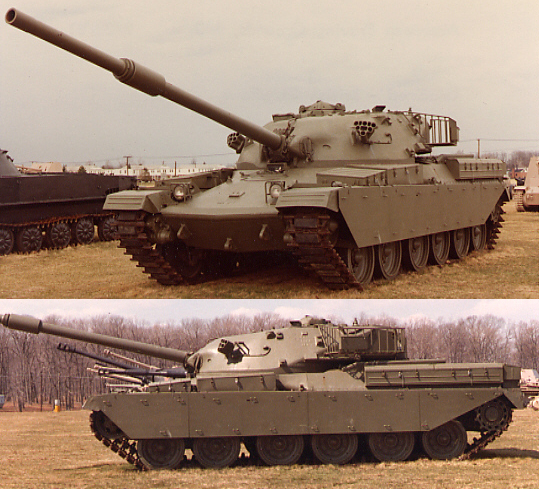
The Chieftain set a brand new standard in NATO for main battle tanks, introducing a sophisticated RHA armour (Stillbrew armour package) and a very efficient 120 mm rifled gun. The Chieftain’s early teething problems were solved when doubling the power of its main engine and general reliability of the multifuel system and transmission. A derivative of the Chieftain for export to Jordan (Shir II) was used as a basis for the Challenger.
The main gun was also a leap forward, with a 120 mm rifled gun that could fire bigger rounds, and improved optics systems. By the standards of the same year, both the French AMX-30, German Leopard-I, and M60 on NATO’s side were found inferior, while the T-62s and T-64s in USSR were not as well protected and their main gun certainly not as accurate. The achilles heal of this model was the mobility however, with teething problems at the beginning due to a massive weight, and underpowered, badly managed multifuel powerplant. These were solved with the Mark.III and especially the Mark.Vs in the early 1980s and the Chieftain remained into service well into the early 1990s. It was also exported to Iran, Jordan, Oman and Kuwait. The Jordanian version was refined to such point that it became the basis for the next gen. MBT, the Challenger.
The Falklands War (1982)
The second intervention of British armour during the cold war was linked to the Argentinian invasion of the Islands, in a bid to bolster national resolve and divert the Argentinian opinion of the state of internal affairs; While the invasion was a flawless success, for the Argentinians, this was the first serious test for 1st minister Margaret Thatcher. A full mobilization was followed by the departure of a task force bound to Port Stanley. On the Falkland islands themselves, the British Garrison only counted light forces, with armoured cars like the Ferret.
But reinforcement came with two brigades, the 3th Commando Brigade (Royal Marines and other units) and the 5th Infantry Brigade (UK’s main overseas quick reaction force). The Blues and Royals fielded FV101 Scorpions, FV107 Scimitar, and FV106 Samson CRVTs. They were opposed to several amphibious LVTP-7s, five LARC-Vs and several Panhard AML-90s armoured cars. However these grounds operations saw few armoured vehicles encounters.
The Fall of the USSR (1990)
The fall of the Soviet Union was of some consequence on British Forces. Noteworthy, the British Armoured division deployed in Germany were repatriated in UK. However if military spending were reduced, there were no spectacular cuts in programs. In 1988, the IFV Warrior was launched by Alvis (now BAE systems), and declined into six variants. The BAE Stormer family of vehicles was introduced, as well as the new British self-propelled howitzer, the AS.90. More importantly the new Challenger II main battle tank was also introduced in service and replaced the Challenger 1. Read more on the UK modern tanks page.

Challenger MBT : The last coldwar British MBT was based on the latest evolution of the Chieftain originally intended for Iran, which entered service in 1982. It was lighter and much faster than the former, and better protected with a new generation of composite armour, the famous “Chobham” armour also used by the M1 Abrams. The first Challenger was produced to 480 vehicles until 1990 before being replace by the even faster Challenger II. The latter introduce a whole range of improvements in several directions, starting with a new FCS, digitalized central battle management system among others, and of course a new gun, the 120-millimetre (4.7 in) 55-calibre rifled L30A1.
Links

The famous Centurion is, perhaps, one of the most influential Tanks in the history of Armour. Entering service just as the Second World War ended, it was systematically upgraded during its service life. It started with a 17-Pdr gun, then received a 20-Pdr, and was finally mounted with the famous L7 105mm gun. Many variants were spawned from it including the Centurion AVRE and Centurion BARV, and would serve with the British Army in one form or another until 2003. It was also sold to and is still used today by multiple countries around the world.

The officially named ‘Tank, Heavy No. 1, 120 mm Gun, Conqueror’ was Britain’s last Heavy Tank. It entered service in 1955, and was retired in 1966. For the entirety of its short service life it was stationed in West Germany. It was replaced by the Cheiftain.

Entering service in the mid-1960s, the Chieftain was designed to replace both the Centurion and Conqueror. It made the conqueror obsolete as it retained a 120mm main gun, but had mobility akin to the Centurion. Like the Centurion, it was systematically upgraded over its life with armor and gunnery improvements. Although it was generally loved by its crews, the Tank was dogged by reliability problems, specifically with the Leyland L60 multi-fuel engine. The tank was replaced in service by the Challenger I.
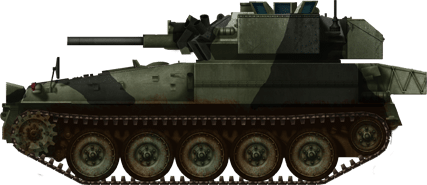
The Combat Vehicle Reconnaissance (Tracked), other wise known as CVR(T)s, were a series of light tanks developed by the British Army in the early 1970s. There were numerous variants including the FV101 Scorpion (above), FV102 Stryker and FV107 Scimitar. The Scimitar is still in service today with the British Army.
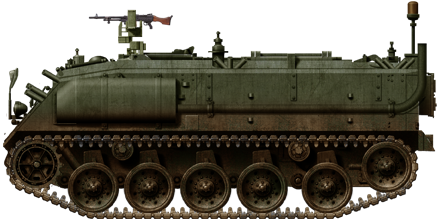
The FV432 Armoured Personel Carrier (APC) entered service in the 1960s. It shares a similar design to the American M113, and is still in service with the British Army.

The Challenger 1 entered service in 1983 replacing the Chieftain. It retained a 120mm Gun but had much improved ‘Chobham’ armour and most importantly a reliable engine. The Tank was retired in 2001 when it was replaced by the Challenger 2. The Jordanian Army has retained a few Challenger 1s in service, however.
Other Vehicles

The FV4005 at Bovington museum. This tank hunter, with a 183 mm main gun under casemate was built upon the Centurion chassis to deal with the heavy soviet tanks like the IS-3. For the same reasons, the Conqueror was built later.
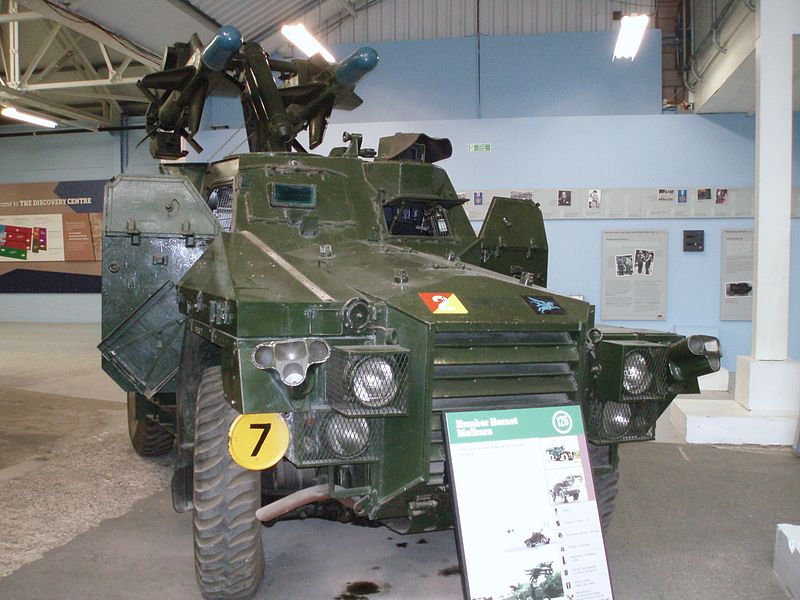
The Humber Hornet Malkara was a response to the growing threat of massive soviet tank fleets poised for invasion on the borders. The vehicle was designed for quick deployment, air-dropped in operations with a couple of wire-guided AT missiles that had the biggest military warhead of their time.
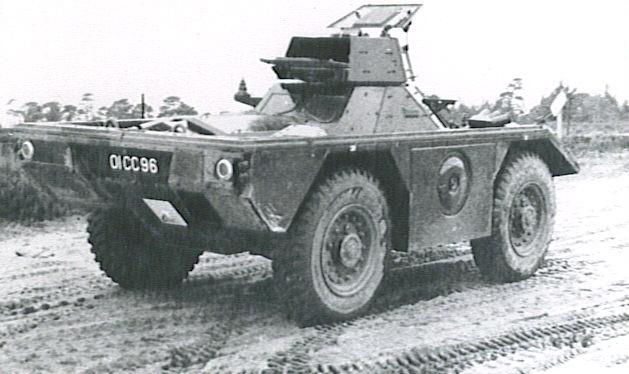
The Ferret was the main British light recce/scout car, worthy of the famous Dingo scout car of ww2 fame. It was well-exported and declined into a multitude of version with various weapons, the most potent being swingfire AT missiles.
The Alvis Saladin from a private collection spotted in Texas. This was probably the best known coldwar British armoured car, fast and well-armed. This vehicle was well exported and built in significant numbers. It was the replacement for the ww2 massive AEC armoured car.

The Alvis Saracen was built on the same FV600 series chassis shared with the 6×6 Saladin. This was the APC version, equipped with the same turret shared by the Ferret, and armed with one or two LMGs.
The FV 432 built by GKN Sankey from 1962 was the British equivalent to the American M113. Both models shared similar configuration, however the British model was better protected and lower in height, but also slower and less powerful.
Illustrations

The Mihr/Shir 2 demonstrator intended for Iran, from which the Challenger was derived.

Challenger 1 Mk.1 or Mk.2, in 1985.

Mk.3 with IFOR, Bosnia Herzegovina 1997.

Challenger 1 Mk.3, 1st Tank 2nd Troop, D squadron, King’s Royal Hussars, KFOR Kosovo 1999. The upside down yellow triangle indicates that it belonged to D squadron, while the number 21 means it belonged to the Sergeant of the 2nd Troop. A member of the squadron indicates that the commander of this vehicle at the time was probably Pete Surridge.

Challenger 1 Mark 3, Sqdn.leader, D Squadron, Queens Dragoons Guards, Operation “Resolute” Bosnia 1996.

Mk.3 in the gulf war, 14th/20th King’s Hussars

Mk.3 Gulf War, 7th Armoured brigade

Jordanian Al Hussein main battle tank, first batch, with a digital camouflage in the late 1990s.

Jordanian Al Hussein MBT in the 2000s

Alvis Scorpion of the British Army with the typical OTAN camouflage, 1975.
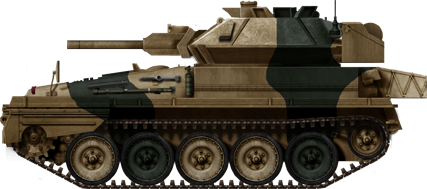
Alvis CRV(T), without the turret storage.
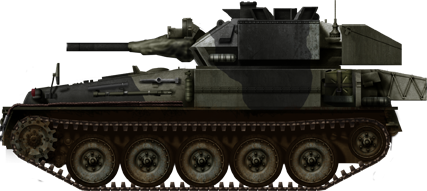
Alvis Scorpion, Blues and Royal regiment, B squadron of the Household cavalry, Falklands 1982.
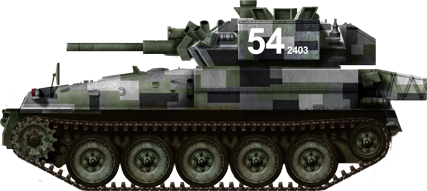
Alvis Scorpion featuring an urban camouflage, 1980s.
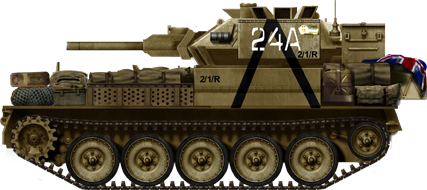
7th Brigade Royal Scots, Operation Desert Storm, Irak, feb. 1991.
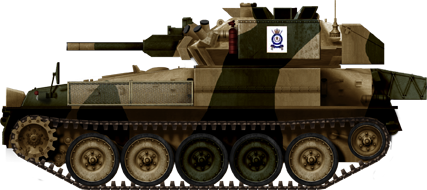
FV101 now preserved at Adlershot.
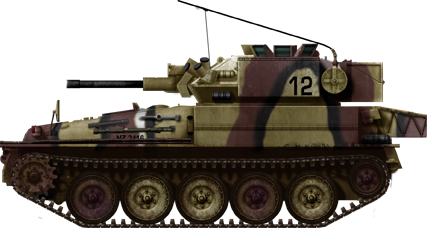
A New Zealand FV 101.
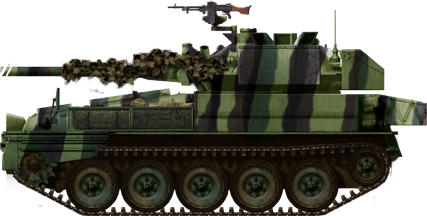
The standard export Scorpion 90, with the typical four-tone “jungle camo” used by some countries.
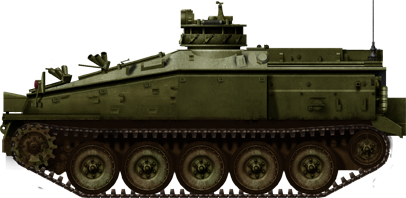
Alvis Striker in green livery.
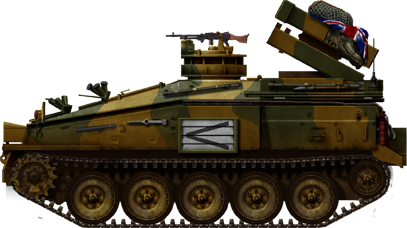
Alvis Striker in firing position.
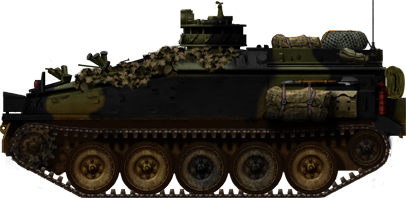
Alvis CRV(T) with the standard NATO green camouflage.
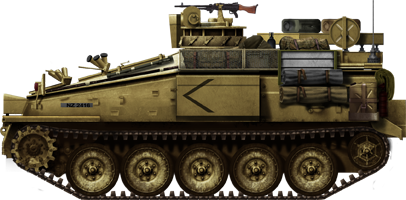
Alvis Striker in 2003, camp New Jersey Kuweit.

Alvis Scimitar in exercises in the 2000s
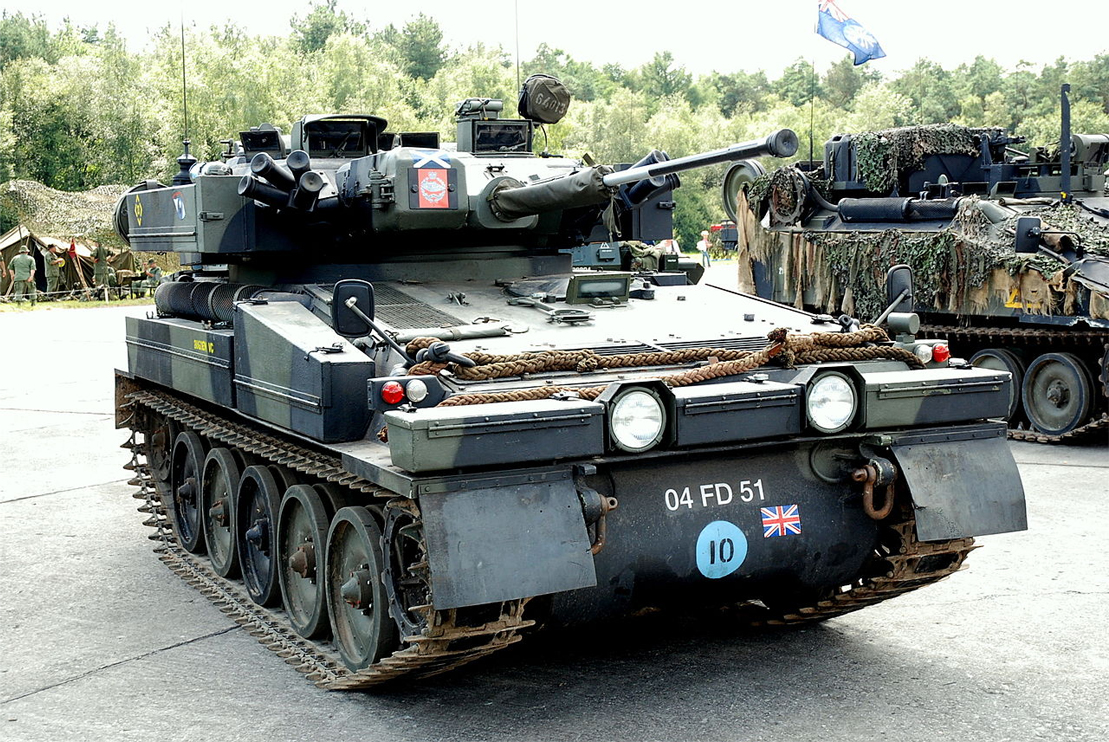
Scimitar and Spartan (background)
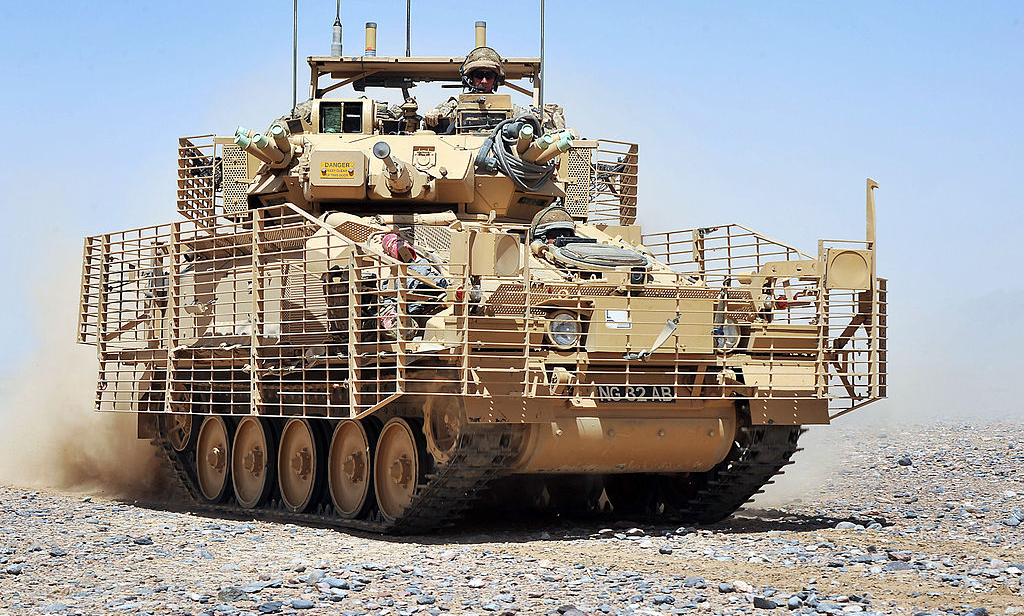
Scimitar in Afghanistan, with BAR armour, 2010
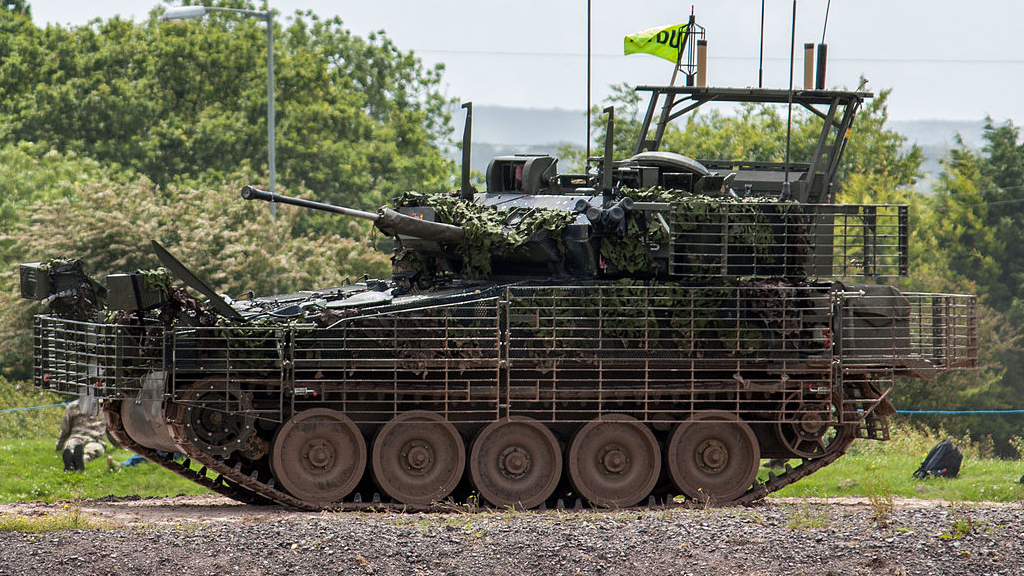
Scimitar with BAR armour and upgraded COM set, new gearbox, hull modifications.
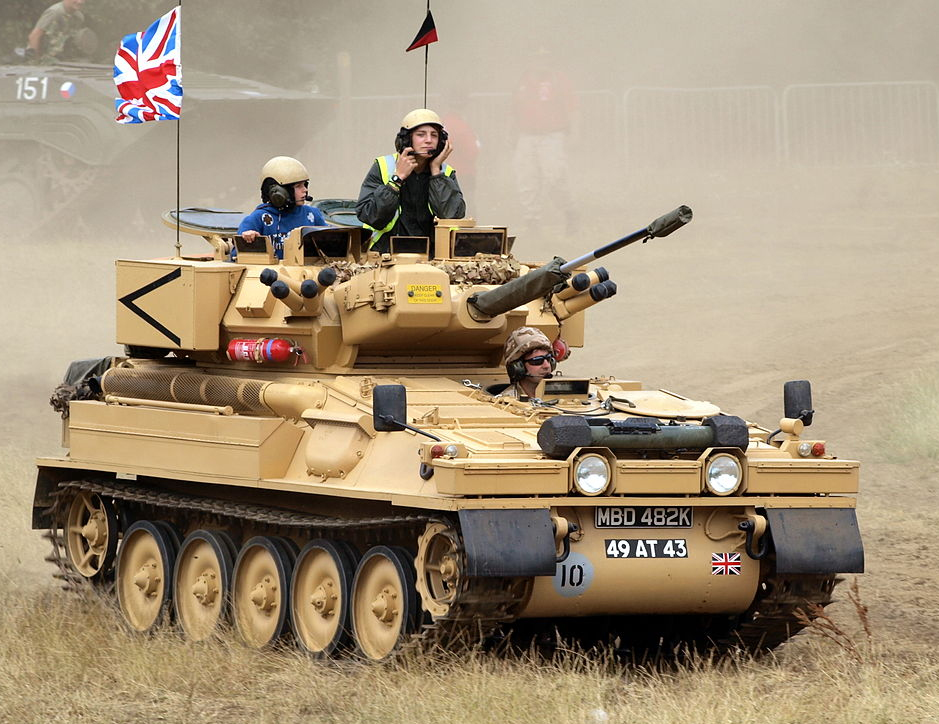
Scimitar of the Gulf War at the summer 2010 Bovington tank parade.

FV 4101 Charioteer tank destroyer.
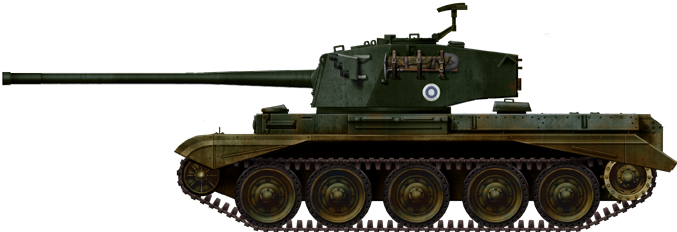
Finnish Charioteer, 1960s.

Jordanian Charioteer with the late 20 pdr
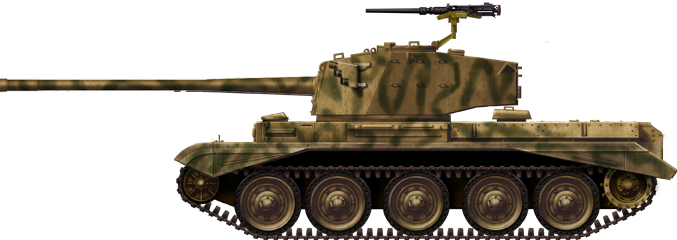
Lebanese Charioteer, PLO, 1985, now preserved.
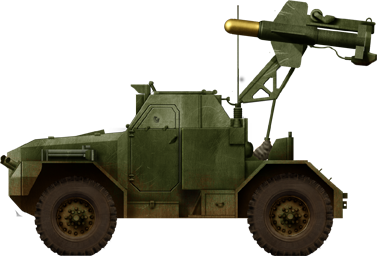
FV1620 Humber Hornet Malkara, rocket firing tank hunter variant.
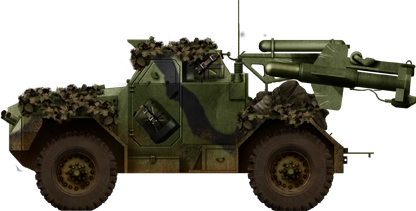
Camouflaged Hornet Malkara with the launcher locked in travel conditions.
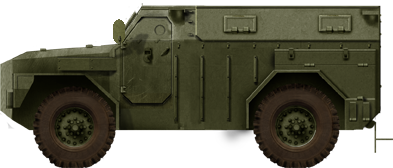
Prototype of the Humber Pig, 1955
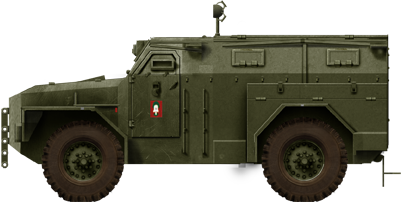
Humber Mark 2 Explosive Ordnance Disposal
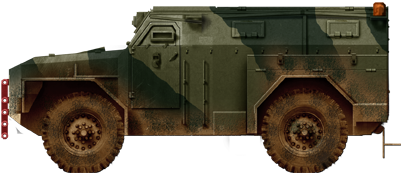
Humber Pig Mark 2
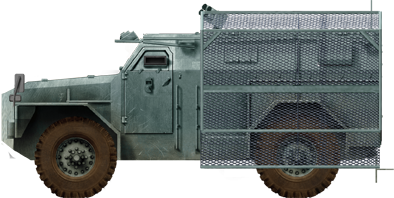
“Flying” Pig Mark 2 with mesh riot screens
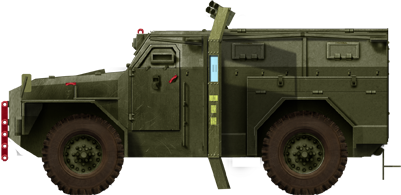
“Flying” Pig Mark 2 with metal and plastic riot screens
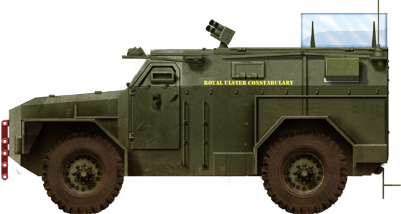
“Holy” Pig Mark 2
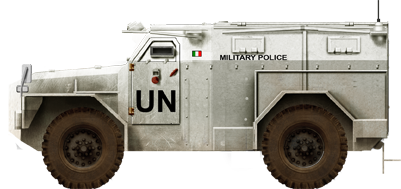
Humber Pig UN, Irish Military Police
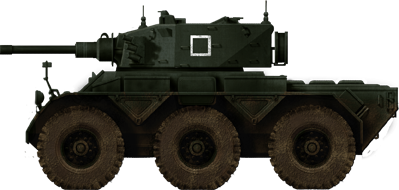
Alvis Saladin Mk.I, preserie on trials, 1957.
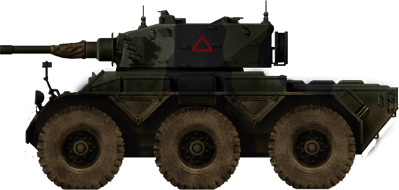
Alvis Saladin Mark II in camouflaged livery, early 1960s
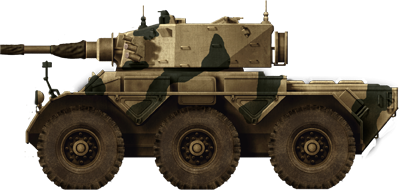
Saladin in desert pattern. It belongs to the Durham Light Infantry Museum. Some vehicles served in Aden in the 1970-80s.
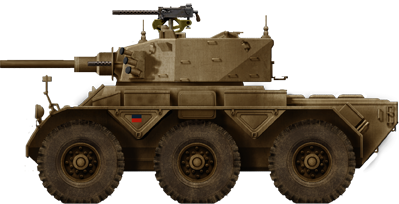
Qatari Saladin in the 1980s.
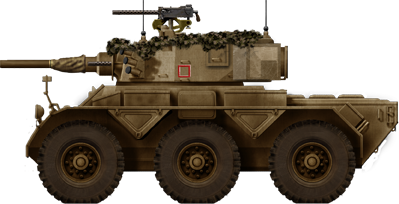
Omani Sultanate Saladins in the 1970s Dhofar war. These vehicles were often crewed by British servicemen.
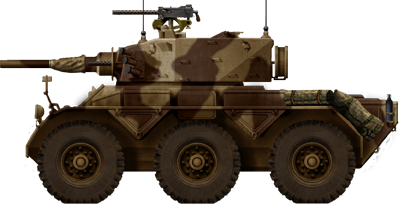
Libyan Saladin as of 1990.
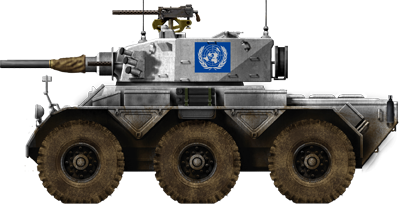
British Saladins in UN colors, defending Nicosia airport, 1972.
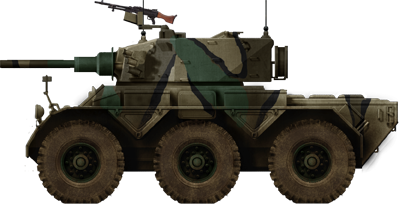
Indonesia saladin of the KOSTRAD Cavalry Battalion as of 2014.
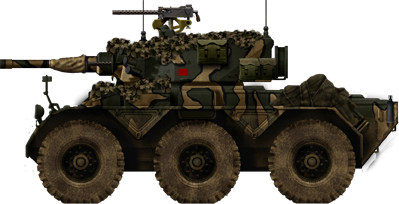
Saladin of the army of Honduras in Tegucigalpa presidential 2009 coup.
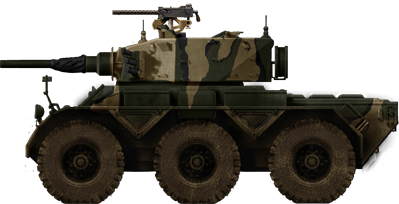
Saladin of the Sri Lanka Army as of 2009.
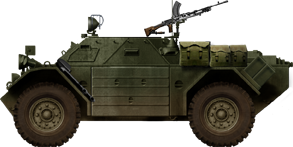
Ferret Mark 1 (FV 701C), characterized by having a single cal.30 Mg without turret, here replace by a Bren. It was solely used for liaison duties.
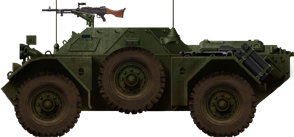
Ferret Mk.1/1, with a reinforced, amphibious hull (thicker sealed plates) and GPMG.
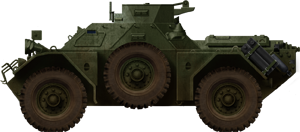
Ferret Mk.1/2, equipped with a turret, augmented crew and a GPMG.
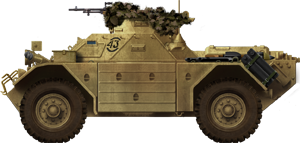
Ferret Mk.1/2, second version, apparently used during the Gulf war, 1990.
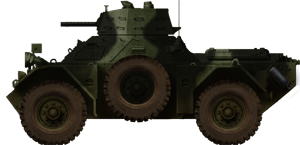
A Camouflaged Ferret Mk.2, 1959, the standard recce version with the new 2-door turret from the Alvis Saracen.
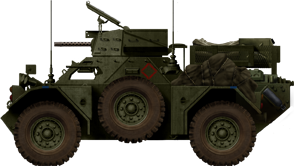
A Mk.2, hatches open, with an extra storage bin over the engine hood.
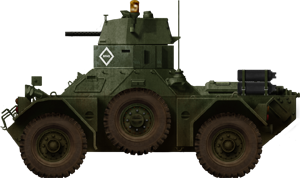
Mark 2/2 attached to Malaya Kings dragoon guards, 1968.
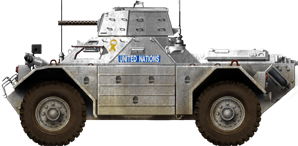
Mk.2/2 of the ONUC. It was an upgraded Mk.2 manufactured with thicker side and rear hull plates.
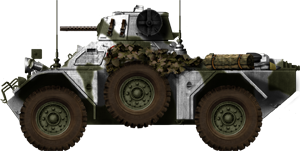
Ferret Mk.2/2 or 2/3, with a winter camouflage, 1965.
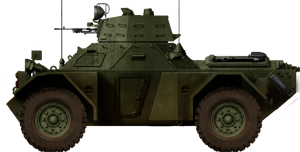
Mk.2/4, essentially an upgraded Mk.2/2.
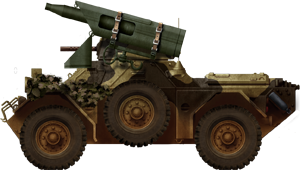
Mk.2/6. The missile version.
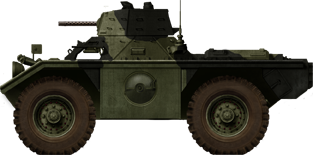
Ferret Mk.3 or 4 – “big wheels Ferret”, an amphibious version defined as such from the beginning.
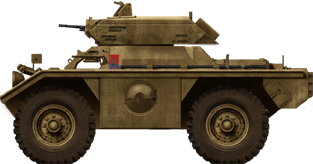
Australian Ferret Mk.5

Green British Army Land Rover Series I SWB, 1948

Land Rover 110 LWG GS

Land Rover Series III Lightweight ASV

Land Rover Series II staff car Saudi Army

Land Rover FW Control RL truck

Land Rover with a pickup rollbar

Land Rover with Wombat Recoilless Rifle

Land Rover staff car of the Omani Army

Land Rover CAV 100 Snatch Defender

Land Rover Series II LWB Ambulance, RAF

Land Rover Series IIIa LWB

Land Rover WMIK Defender

Land Rover Perebties 6×6

Land Rover Series III LWB, Congo 1962

Land Rover near the Zambezi, Africa

Land Rover Defender with H9 ATGM

British Shorland tested by the British army in 1955

Shorland camouflaged in Trinidad

S55 Shorland APC variant

FV 4201 prototype as delivered for trials in 1962. Notice the small commander cupola, absence of side skirts or thermal sleeve around the main gun.

Chieftain Mk.1 main battle tank. The first production version were used until the year 2000 as training tanks.

Chieftain Mark 2.

Chieftain Mk.3 in the 1970s.

The Chieftain Tank Mk.3 BAOR of the West Berlin infantry brigade in the 1980s, with this famous 1980s urban livery by Lt.Col. Clendon Daukes.

Early Chieftain Mark 5 in manoeuvers in the 1970s.

Chieftain Mark 5 BAOR of the British Army stationed in belgium, 1979.

Chieftain Mk.7 from the 4th battalion Royal Tank Regiment stationed near Tilworth in 1984.

Chieftain Mark 10 BATUS British Army training unit at Suffield in the 1990s.

Chieftain Mark 11 BATUS (camouflage), equipped with TOGS, British Army training unit at Suffield, early 1990s.

Omani Chieftain Mk.11

Jordanian Shir-I Al-Khalid.

Iranian Chieftain Mihr. Shir-II update.

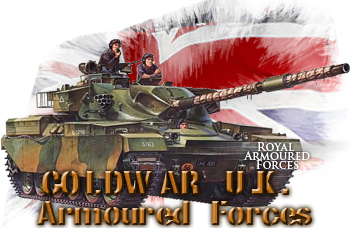

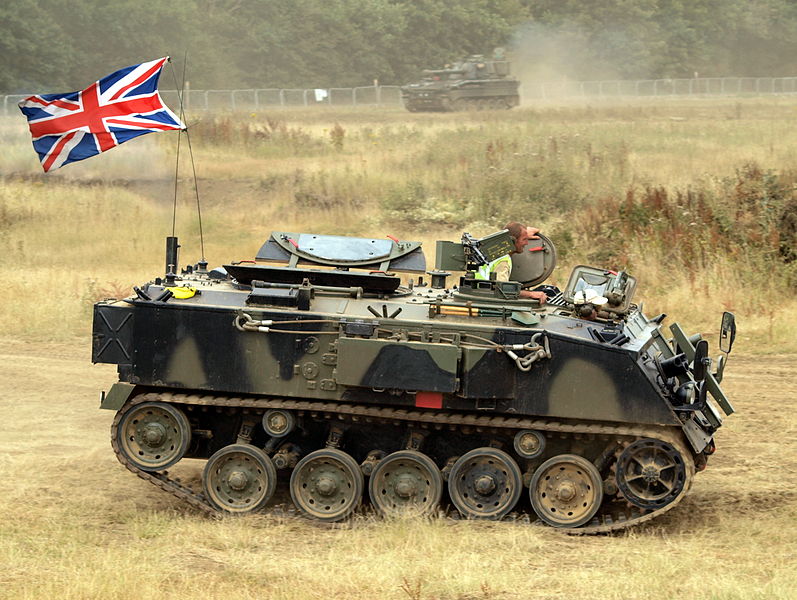
12 replies on “United Kingdom of Great Britain and Northern Ireland (Cold War)”
I hope when you have time you’ll add the Saxon armoured personnel carrier
The FV4005 had a 183mm main cannon, not a 180mm like implied above.
Hello Joni
It has been fixed, thanks !
David B, TE Manager
hello,
what would a L7 105mm gun do to an abrams?
– liam shurgalla
Depends where it hit. Frontally, not much.
Side and rear have a chance to penetrate but… with early variants you can damage some part but M1IP-M1A2C nothing since they have blow-out panels and ERA in M1A2 TUSK-M1A2C so early have a chance to disable some part but… recommendation is not to engage the tank at all. (unless you have a challenger 2 Tes Megatron? or a challenger 2).
All those land rover derivatives and no mention of the “Austin Champ!!!
were is the FV4202? there is a mention of it but no page for it
We do not have an article on it we are afraid.
Gareth (TE Manager)
do you think you could make on?
do you think you could make one?
Also a fv4004 Conway would be cool